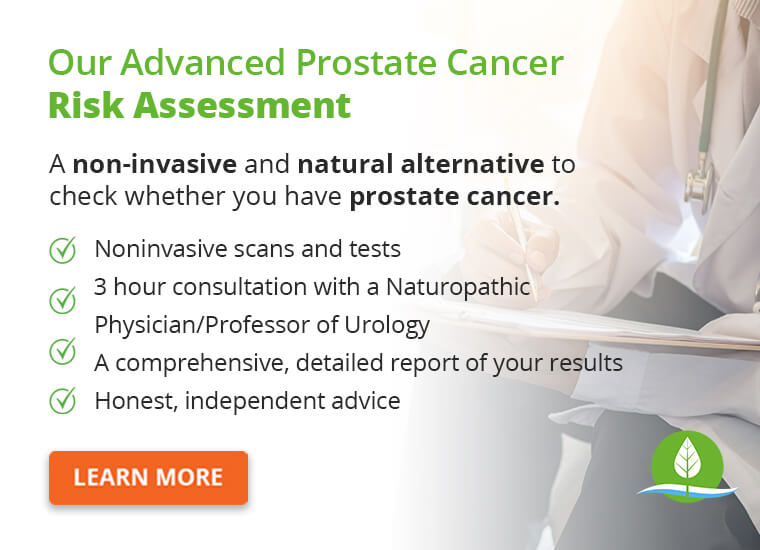Prostate cancer starts in a tiny portion of a gland only found in men.
This organ, the prostate gland, is a walnut-sized gland located between the bladder neck and the urethra, sitting below the bladder.
This cancer grows slowly and does not often show symptoms making it difficult to trace if it is not incidental.
As a result, some men with prostate cancer never discover they had prostate cancer while alive. However, some prostate cancers overgrow and spread outside the prostate.
That is why prostate cancer is a significant health concern. Around the world, prostatic carcinoma causes significant global morbidity beyond stage 1 prostate cancer.
Prostate cancer is associated with significant annual diagnoses and related mortality in the United States, with reliable statistics supporting this fact. In the United States, more than 268,490 new cases are diagnosed, and 34,500 people die of prostate cancer. [1]
Also, in the UK, approximately 48,500 new prostate cancer cases are diagnosed annually.
Prostate cancer is becoming the most common malignancy among men and one of the most common causes of cancer death. [1]
What is stage 1 prostate cancer?
Typically, stage 1 prostate cancer is the least advanced form of prostate cancer where the cancer is still small in size and has not spread beyond the prostate gland.
There are 4 stages of prostate cancer. Usually, stages 1 to 4 are written as the Roman numerals I, II, III, and IV. A general rule is that the higher the stage number, the more cancer has spread, and the lower the number, the less severe.
Stage 1 prostate cancer is defined by a prostate-specific antigen of less than ten ng/mL and a gleason score of 6.
The prostate-specific antigen or PSA test is a blood test used primarily to screen for prostate cancer, and it measures the amount of prostate-specific antigen (PSA) in your blood. PSA is a protein produced by both cancerous and noncancerous tissue in the prostate.
The Gleason score is a grading system used to help evaluate the outcomes of men with prostate cancer using samples from a prostate biopsy. On biopsy, doctors check how much cancer looks like healthy tissue when viewed under a microscope. Notably, less aggressive tumors generally look more like healthy tissue.

Stage 1 prostate cancer symptoms
Many prostate cancer cases are diagnosed when the disease is still asymptomatic stage. But what are the symptoms of stage 1 prostate cancer?
The most common presenting symptoms of stage 1 prostate cancer include lower urinary tract symptoms such as:
- Frequency: needing to urinate eight or more times a day.
- Urgency: sudden desire to void that is often difficult to defer, which causes fear of leakage and incontinence.
- Nocturia: needing to urinate two or more times a night.
- Hesitancy: difficulty urinating where it is challenging to start a stream or keep it flowing.
- Dysuria: painful or difficult urination.
- Post-void dribbling: Small amounts of the remaining urine leaking after urinating.
The prostate is part of the male reproductive and urinary systems. It makes some of the fluid that is part of semen. Therefore, problems with the prostate can lead to sexual dysfunction such as erectile dysfunction.
Other early prostate cancer symptoms can include:
- Blood in the urine (hematuria)
- Blood in the semen.
- Systemic symptoms: weight loss, weakness, fatigue
- Bone pain (associated with prostate cancer that has started spreading)
In advanced cases, prostate cancer can spread to the lymph nodes in the groin area or other body parts. The most common symptoms are swelling and pain around where the cancer has spread. In addition, cancer cells can stop lymph fluid from draining away. The result is swelling in the legs due to fluid build-up. [2]
Get Your FREE PSA Lowering Diet Plan!
- Naturally lower PSA levels
- Reduce nighttime trips to the bathroom
- Enjoy better bladder control and urine flow
Causes
Researchers do not know what precisely causes prostate cancer. However, they have established some risk factors and potential causes. These factors are still being finalized in research studies. Advanced age is the leading risk factor for prostate cancer.
On a basic level, prostate cells become cancerous due to changes in the DNA. DNA is the cell chemical that makes up our genes and controls cellular function. Therefore, researchers hypothesize that higher androgens levels might contribute to prostate cancer risk in some men since male hormones or androgens, such as testosterone, promote prostate cell growth.
Also, ongoing research studies have found that men with high levels of another hormone, insulin-like growth factor-1 (IGF-1), are more likely to get prostate cancer.
Other studies have found that inflammation in the prostate might be linked to prostate cancer since inflammation results in cell DNA damage, and there is a high chance of it becoming cancerous.
Like other cancers, DNA mutations due to radiation or cancer-causing chemicals can cause the prostate cells to become cancerous.
Risk factors
Certain behaviors, diets, or conditions can affect your risk or chance of developing cancer in general. However, some predisposing factors for prostate cancer, such as race, gender, and age, cannot be changed.
For example, the risk for prostate cancer increases as men get older, and the chance of being diagnosed with prostate cancer is greater after age 50. Also, though, sometimes, cancer develops in people who don’t have any risks.
The following are also associated with an increased risk of advanced prostate cancer: black race, height, high body mass index, high calcium intake, high linoleic acid intake and high levels of dietary fat, low physical activity, smoking, low tomato sauce consumption, and positive family history of prostate cancer and other heritable cancers such as breast or colorectal cancer.

When to see a doctor
It’s always a good idea to call your doctor if you experience symptoms of prostate cancer, even if they’re mild, especially if you have already been diagnosed with the condition.
The National Cancer Institute recommends that men in their 30s or 40s see a doctor if they experience prostate cancer symptoms.
If you don’t have the diagnosis, your doctor will likely recommend a DRE or digital rectal exam (DRE) in addition to the PSA test. Having both tests done can help find dangerous cancers early when it is easier to treat.
In stage 1 prostate cancer, the doctor can’t feel the tumor or see it with imaging tests. The best imaging is a magnetic resonance imaging (MRI) scan.
It uses strong magnetic fields and radio waves to produce detailed images of the inside of the body. If prostate cancer has been found, MRI can help determine the extent (stage) of cancer.
In addition, MRI scans can show if cancer has spread outside the prostate into the seminal vesicles or other nearby structures. Thus, MRI has been extensively studied for its ability to detect prostate cancers.
Should I go to the ER if I think I have prostate cancer?
Yes, you should go to the nearest hospital emergency department if you have any of the following symptoms: burning pain during urination, urgency, frequent urination, especially with fever.
Treatment options
Given the indolent nature of prostate cancer and the significant potential for a treatment-related decline in quality of life, doctors should educate their patients on the risks and benefits of participating in screening and undergoing treatment if cancer is detected.
There are three main treatment options:
- Surgery: medical procedure to examine, remove or repair tissue.
- Radiation therapy: uses high-energy rays or particles to destroy cancer cells.
- Hormonal therapy: reducing the number of androgens (male hormones) or blocking androgens from being used.
The prognosis for surviving prostate cancer is excellent. Most older men with prostate cancer tend to live as long as other men their age with similar general health and do not have prostate cancer.
Additionally, long-term remission or even a cure is possible. However, the prognosis always depends upon the staging and grading of the tumor.
For instance, there is a poor prognosis for high-grade cancers unless treated very early and a poor prognosis for cancers that have spread to surrounding tissues.
In the case of metastatic prostate cancer, there is no cure. In addition, patients may incur significant morbidity due to treatment regimens, including persistent dysuria, urinary frequency, erectile dysfunction, rectal bleeding, and incontinence.
Stage 1 prostate cancer has a 5-year survival rate of nearly 98 percent.
Supportive care helps people meet physical, practical, and emotional challenges of prostate cancer. It is an essential part of cancer care. Many programs and services are available to help meet the needs and improve the quality of life of people living with cancer and their loved ones, especially after treatment has ended. Although, recovering from prostate cancer and adjusting to life after treatment is different for each person. [2]
Conclusion
Prostate cancer arises from a small organ in men that sits under the urinary bladder. Prostate cancer is of growing concern since it is one of the most common cancers in men globally.
Prostate cancer is categorized into four stages, and early diagnosis of stage 1 prostate cancer is associated with more favorable survival outcomes, as supported by relevant research.
Statistical data indicates that approximately 1 in 8 men will receive a diagnosis of prostate cancer during their lifetime, as reported by reputable sources [3]. Therefore, being able to recognize the symptoms of stage 1 prostate cancer and getting screened is important so that doctors can detect the disease early and make the needed treatment interventions. Researchers are also continuing to look for foods and medications that can help lower prostate cancer risk.
Explore More








